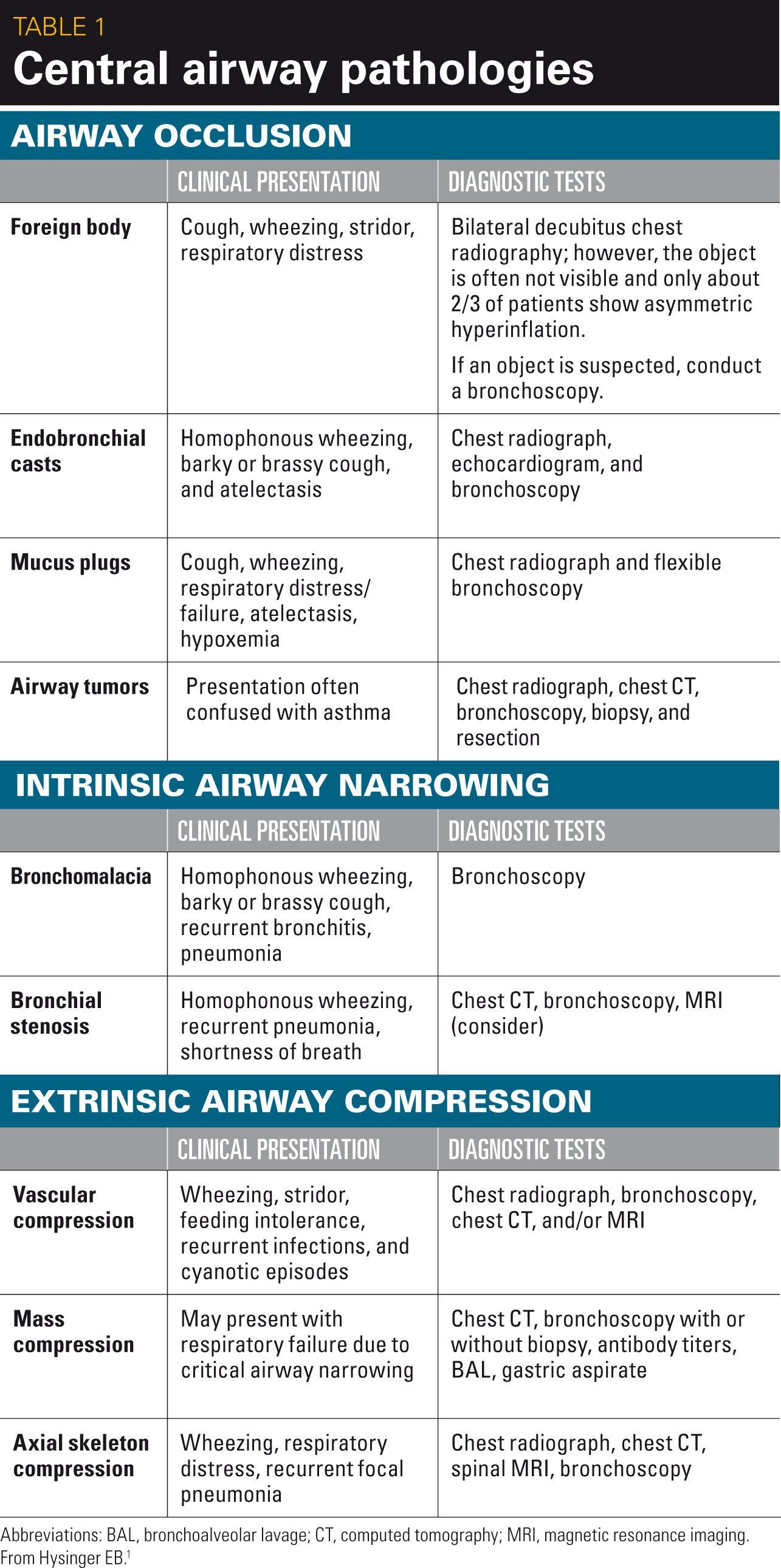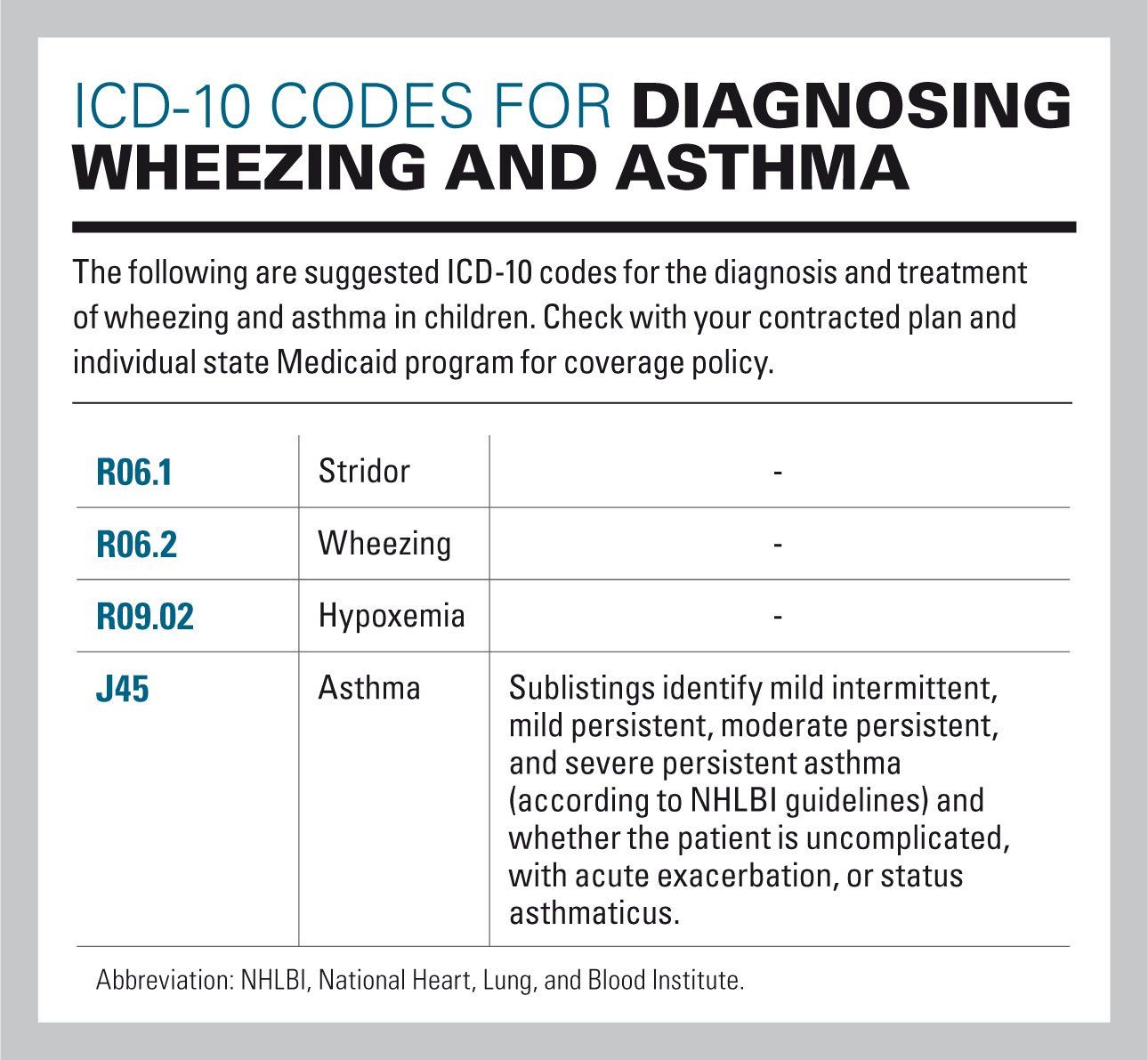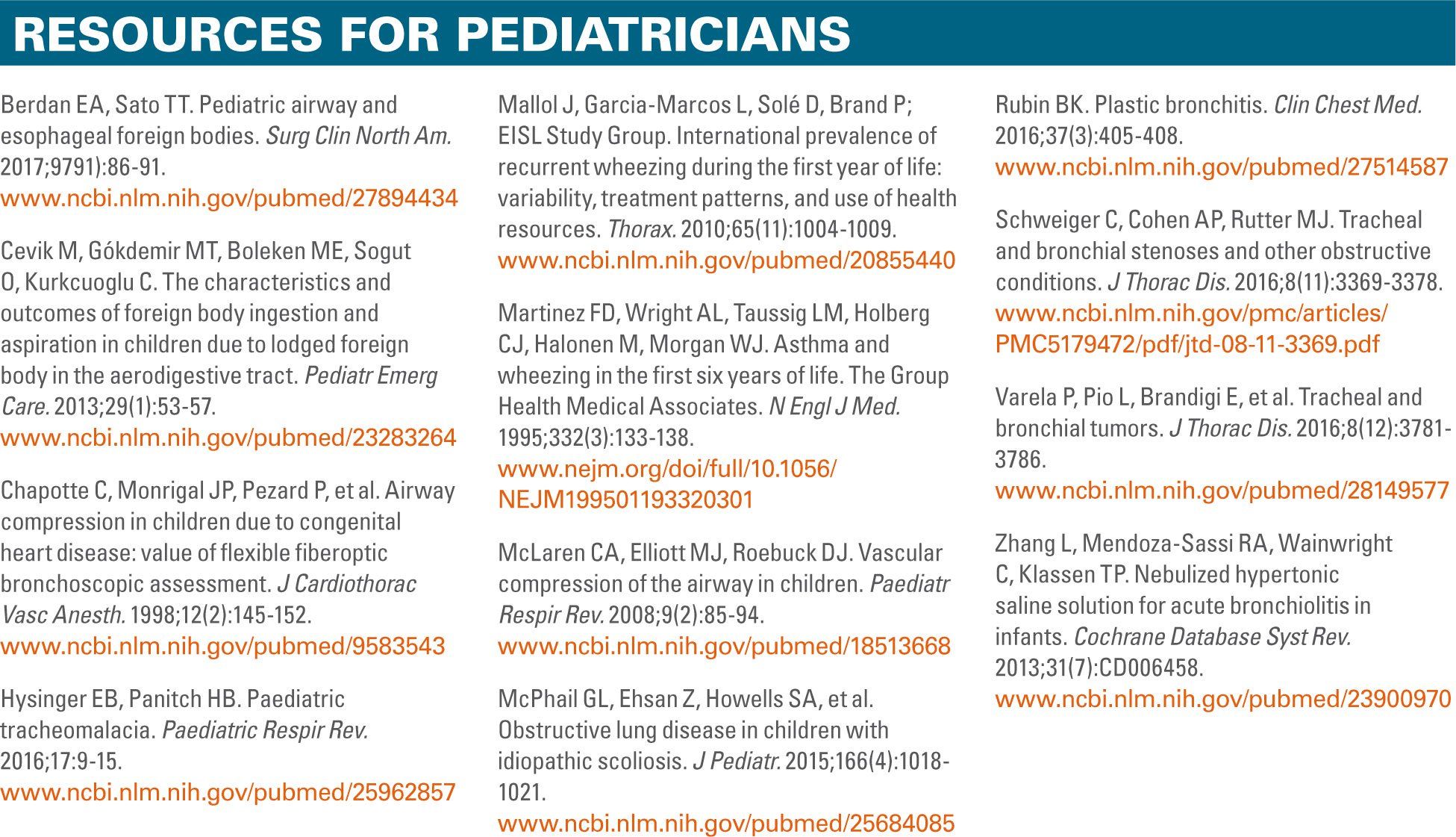How to diagnose and manage localized wheezing
Wheezing in children is often associated with asthma. However, localized wheezing should alert the clinician that something other than asthma may be present.
Wheezing is common in children. Up to 45% of children experience at least 1 episode of wheezing in their first year of life, and 20% will have recurrent episodes. By age 6 years, nearly one-half of all children will have a history of wheezing. Of the many potential causes of wheezing, the most common are attributed to a viral illness or asthma in which children present with diffuse and polyphonic wheezing.
Less common, however, are children who present with localized wheezing. Wheezing in these children typically has a homophonous sound suggestive of a central airway pathology in which the high flow rates create loud amplitude sounds. Accurate identification of localized wheezing is essential to differentiate it from viral illness and particularly asthma to ensure that a proper diagnosis is made and subsequent management is appropriate.

“Localized wheezing should alert the general clinician that they are treating something other than asthma,” says Erik B. Hysinger, MD, MS, assistant professor, Division of Pulmonary Medicine, Department of Pediatrics, Cincinnati Children’s Hospital Medical Center, Cincinnati, Ohio. “Asthma should be a diffuse process that you hear everywhere when you listen to the child whereas localized wheezing is typically indicative of a problem of the large central airways.”
Although clinicians generally know the difference between localized wheezing from diffuse wheezing, Hysinger underscores the importance for clinicians to be alert to when a child presents with localized wheezing as they are more accustomed to associating wheezing with asthma. “Asthma and virally induced wheezing is so common in the general pediatric population that it is easy to not think about the pathology associated with focal wheezing,” he says.
In a presentation at the 2017 American Academy of Pediatrics (AAP) National Conference titled “It’s not asthma: Diagnosis and management of localized wheezing”, Hysinger spoke on the importance of correctly identifying localized wheezing to ensure proper diagnosis and treatment. He provided specific guidance on how to make the differential diagnosis on the common reasons underlying localized wheezing, management strategies based on the underlying reasons, and when to refer to a subspecialist. This article provides an overview of his presentation.
Diagnosing the underlying cause

In most cases, localized wheezing can be distinguished from diffuse wheezing by a simple stethoscope examination of the chest. As stated earlier, localized wheezing has a monophonic sound compared with diffuse wheezing that is polyphonic.
Hysinger recommends that a child who presents with localized wheezing be given a trial of bronchodilators such as albuterol. If the wheezing doesn’t resolve, that is suggestive that the wheezing is not caused by asthma but rather an underlying pathology of the large central airways.
Hysinger devoted the bulk of his presentation to describing the types of large central airway pathologies that may underlie localized wheezing and how to approach the differential diagnosis. He grouped these pathologies into 3 broad categories: airway occlusion, intrinsic airway narrowing, and extrinsic airway compression. The following is a description of each category. Table 1 lists the clinical presentations of the pathologies within the categories, along with the additional tests to perform to make a diagnosis.
Airway occlusion
Potential causes of airway occlusion include the presence of a foreign body, endobronchial casts, mucus plugs, or airway tumors. Among these, Hysinger underscored the need to look for the possibility of a foreign body blocking the airway, particularly in children aged younger than 4 years in whom this type of occlusion is most common. Common objects include coins, button batteries, and food. The need to consider this possibility of localized wheezing is highlighted by the more than 30% of children who are initially misdiagnosed, often up to 1 month, which can result in a number of complications such as pneumonia, abscess, atelectasis, airway erosion, and bronchiectasis.
Recommended: Action plan for epinephrine and anaphylaxis
Although rare, the other 3 types of airway occlusion also may be possible. Endobronchial casts and mucus plugs are distinct pathologies that can obstruct the airway, although distinguishing one from the other is difficult. Endobronchial casts are cohesive and branching casts of mucin, fibrin, and inflammatory cells that form and obstruct the airway, whereas mucus plugs fill the airway with unorganized mucoid secretions. Airway tumors are also rare. Most are benign, such as a papillomatosis, hemangiomas, and hamartomas, but they can be associated with serious morbidity. Some tumors may be malignant and include carcinoids, mucoepidermoid carcinomas, inflammatory myofibromas, and granular cell tumors.
Intrinsic airway narrowing
Clinicians should also be aware that localized wheezing may be caused by intrinsic factors resulting in the narrowing of the airway, including bronchomalacia and bronchial stenosis. Very rarely, occurring only in 1 in 2100 children, a child may have bronchomalacia, a condition characterized by weakness of the cartilage and posterior membrane that leads to dynamic airway collapse. Also rare is bronchial stenosis, a fixed narrowing of the bronchi that is either congenital or acquired (eg, following intubation and suction trauma).
Extrinsic airway compression
Extrinsic airway compression may result from an abnormal enlargement of a vascular structure or mass pressing on the airway, or compression by the axial skeleton. Vascular compression is commonly caused by abnormal vascular development, particularly with vascular stents. Compression that is caused by a mass is most commonly the result of an infection, reactive lymphadenopathy, or tumor. Axial skeleton compression is most commonly seen in children with severe scoliosis or kyphosis in which the spine’s curvature directly compresses the airway.

Management strategies
Management of localized wheezing depends on the particular pathology underlying it. The specific management strategies are listed in Table 2.

Of particular importance is the recognition that localized wheezing that is not responsive to albuterol does not suggest asthma. “What the management [of localized wheezing] will not be is to continue large doses of albuterol and to continue high doses of steroids or other treatments for asthma,” Hysinger emphasizes.
Next: Emergency airway management
For persistent localized wheezing, patients should be referred to a pulmonologist or ear, nose, and throat specialist for further evaluation and management.
Summary
Wheezing is common in children and often associated with asthma. Localized wheezing, however, should alert the clinician that something other than asthma may be present. Patients who present with localized wheezing should be given a trial of bronchodilators.
Wheezing that does not resolve is suggestive of a pathology of the large central airway. A number of diagnostic tests can be used to make the diagnosis of the correct pathology, which typically begins with getting a chest radiograph. Patients with persistent localized wheezing should be referred to a pulmonologist or ear, nose, and throat specialist.

REFERENCE
1. Hysinger EB. It’s not asthma: Diagnosis and management of localized wheezing. F4042. Presented at: American Academy of Pediatrics National Conference and Exhibition; September 19, 2017; Chicago, IL.
Ms Nierengarten, a medical writer in Minneapolis, Minnesota, has over 25 years of medical writing experience, authoring articles for a number of online and print publications, including various Lancet supplements and Medscape. She has nothing to disclose in regard to affiliations with or financial interests in any organizations that may have an interest in any part of this article.
The Role of the Healthcare Provider Community in Increasing Public Awareness of RSV in All Infants
April 2nd 2022Scott Kober sits down with Dr. Joseph Domachowske, Professor of Pediatrics, Professor of Microbiology and Immunology, and Director of the Global Maternal-Child and Pediatric Health Program at the SUNY Upstate Medical University.



















